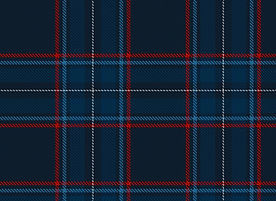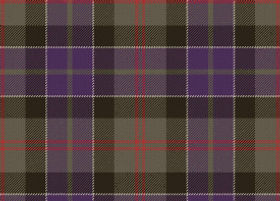The Stone Circle at Lochbuie
The monuments comprise a stone circle and two other standing stones, all of prehistoric date and visible as a series of upstanding stones. The stone circle and one of the standing stones were first scheduled in 1964, but an inadequate area was included to protect all of the archaeological remains: the present re-scheduling rectifies this. The stone circle is situated on level pasture at the head of Loch Buie at approximately 10m OD. The two other standing stones lie some 40m SW of and 115m WSW of the stone circle respectively, but within the same present parcel of land. The stone circle originally consisted of nine stones. One of these is now missing and its position has been marked in recent times by a small boulder. The circle measures approximately 12.3m in diameter and is composed for the most part of granite slabs, which have been positioned with their flatter faces set towards the inside of the circle. The tallest stone stands about 2m high and measures c.0.85m by 0.3m at its base. An outlying standing stone, situated 4.6m SE of the circle, comprises a pointed granite block standing 0.85m high and measuring c.0.6m by 0.3m at its base. The single standing stone situated about 40m SW of the stone circle stands about 3m high and measures c.0.85m by 0.3m at its base, tapering to a fairly narrow top. The standing stone situated about 115m WSW of the stone circle comprises a comparatively flat-sided monolith, aligned NE and SW. This stands about 2.15m high, although the top has been broken off in antiquity, and measures c.0.75m by 0.7m at its base. Stone settings of this type are characteristic of the Neolithic period and normally date to the third millennium BC. Three separate areas are proposed for scheduling, as marked in red on the accompanying map. These include the remains described and an area around them within which related material may be expected to survive. The three areas are as follows:
1. The largest area is sub-circular in shape, centred on the stone circle and the outlying standing stone closest to the stone circle, and has maximum dimensions of 38m NW-SE by 33m transversely. Its NW limit is defined by, but excludes, the field boundary.
2. The second area is centred on the standing stone situated about 40 SW of the stone circle and is circular in shape, measuring 10m in diameter.
3. The third area is centred on the standing stone situated about 115m WSW of the stone circle and comprises a truncated circle, with a maximum diameter of 10m. It is defined to the NW by the field boundary, which is itself excluded from the scheduling.
CLAN
MACPHAIDEIN
The Clan MacPhaidein have no septs. The Surnames associated are just a variation of spellings used since c563AD. Yes, this Clan all descend from a progenator. Páidín of the Isles 540AD-620AD.
Clic on associated Surname for family websites:
Fadyen, MacFadin, MacFadion, MacFadwyn, MacFadyean , MacFadyen, MacFadyon, MacFaddien, MacFaddin, MacFadzan, MacFadzean, MacFadzein, MacFadzeon, MacFayden, MacFeyden, MacPaidin, Macpadene , MacPhadden, MacPhaiden, Makfadieane, Makfadzane, McFaddan, McFadden, McFaddin, McFadzen, McFayeane, McFydeane, McKfadyean, McPhadan, McPhaddion, McPhaden , McPhadzen, McPhaiden, McPyden, McSpadden, M'Faden, M'Fadzean, M'Fadzeane, M'Fadzeans , M'Fadzeon, M'Faggaine, M'Fedden, M'Phaden, M'Phadden, Phaidean, Phaiden, Phaidein, Patrick, Padan, Paden, Padin, Padon, Padraig, Padyen, Páidín, Paton, Patein, Pateman, Paten, Patenesone, Patone, Patonson, Patonsoun, Pautoun, Patoune, Patoun, Patowne, Patovnson, Pattinson , Patynson, Patten, Patton, Pattoun, Pattoune, Pattounsoun, Pattowsone, Pawton, Pawtonsoun, Pawtoun, Pawtoune, Pedan, Peden, Pedin, Pedden, Peedin, Petensen, Pethein , Pethin, Peathine


MacFadyen

MacFadzean

MacPhedran
ExploreThe Lands Of MacPhaidein





Lochbuie Kerb Cairn
The Lochbuie Kerb Cairn is a funerary built about the time the first humans inhabited the island. The cist in the centre seems to mark the change from ritual cremation to ritual burial use around the middle 6th century which coincieds with the arrival of St Columba at Iona in May 563 introducing Christianity and ritual burial as site has numerous burial cairns for the inhabitants of Lochbuie for a millinia. The “false portal” is direct indecation of Christian influence as an entrance to the cemetery and the location of the Kerbs states hirearcy. Probably people of importance.
Moy Castle and the Clan Maclaine
MacPhaidein Legend states: When Hector MacLaine went to claim the lands given to him by the MacDonalds c1370, he knew the lands were already under the possession of the MacPhaidein's. So, he devised a scheme to take over the lands from within. He convinced Chief MacPhaidein they would share the land and for mutual protection from various raiders and neighboring tribes, he would rebuild the MacPhaidein fortalice watchtower at the head of Lochbuie that had fallen into disarray. Chief MacPhaidein granted Hector permission and after Moy Castle was completed, Hector used the Castle to wage war on the MacPhaidein! However, the MacPhaidein fought so fiercely defending their land that Hector had to call a truce to confer. A feast in honor of the MacPhaidein Chief was prepared by the MacLaine at the base of Moy Castle. Hector climbed to the top of the Castle and shot an arrow through a bone that the MacPhaidein Chief was eating piercing his neck, killing him and ending the war. This was the end of the once great Clan MacPhaidein as most clansmen moved on or were absorbed into the Clan MacLaine.
Lochbuie Stone Circle
This small and well preserved stone circle sits in a stunning location overlooked by Ben Buie at the southern end of Mull. The circle was originally nine granite stones, set in a ring about 12 metres in diameter, with the tallest stone being about two metres high. It is mainly composed of granite slabs which have been positioned with their flatter faces towards the inside of the circle.
Chapel of Caibeal Mheamhair
In May 563AD Saint Columba, the celebrated founder of the Culdee Church in Scotland, exiled from his native Ireland, traveled to Iona with 12 companions and founded a monastery. From Iona they set about the conversion of pagan Scotland and much of northern England to Christianity. It is believed one of the 12 was Páidín as he was assigned by Saint Oran (also one of the 12) before his death c563AD, to the Isle of Mull to build a chapel and spread the gospel. Páidín travels to the Isle of Mull making his home in Lochbuie and built the first chapel of Mull where he preached the rest of his life and was known as “Páidín of the Isles”. His descendants continued as clerics of the chapel until 1367 when Hector MacLean's army invaded and killed Chief MacPhaidein. In 1370 Reverend James Pethein I 1298AD-1377AD converted Hector MacLaine to Christianity shortly before his death, so Hector moved the Chapel from the Kerb-Cairn to its current location close to the Castle and re-named it Caibeal Mheamhair Translated from Galic as "Chapel of Remembrance" with the surrounding cemetery for MacLain burials.
MacPhaidein
TARTANS

McFaddan


Chief Mungo MacPhaidein
Battle of Renfrew
1164
Paton

Pethein/Peden

MacPhaidein Projects

Taking Back Lochbuie
Drone Over Lochbuie


Lets Go To Lochbuie

Chief Terry Glenn Peden Sr. USA
Clan MacPhaidein
Lochbuie, Isle of Mull PA62 6AA, United Kingdom
GETTING HERE
